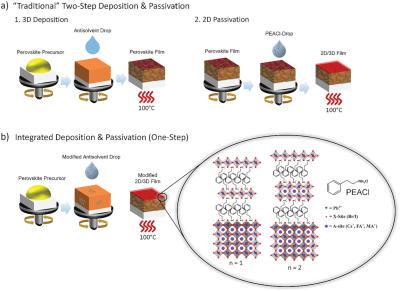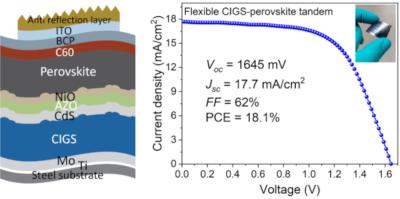Researchers develop integrated deposition and passivation strategy for controlled crystallization of 2D/3D halide perovskite films
Researchers from the University of Stuttgart, Lawrence Berkeley National Laboratory and Brandenburg University of Technology Cottbus-Senftenberg have introduced a simplified deposition procedure for multidimensional (2D/3D) perovskite thin films, integrating a phenethylammonium chloride (PEACl)-treatment into the antisolvent step when forming the 3D perovskite.
The “traditional” deposition and passivation processes (top row) and the integrated deposition and passivation strategy to form 2D passivated 3D halide perovskite films (bottom row). Image from Advanced Materials.
This recently developed simultaneous deposition and passivation strategy reduces the number of synthesis steps while simultaneously stabilizing the halide perovskite film and improving the photovoltaic performance of resulting solar cell devices to 20.8%.



